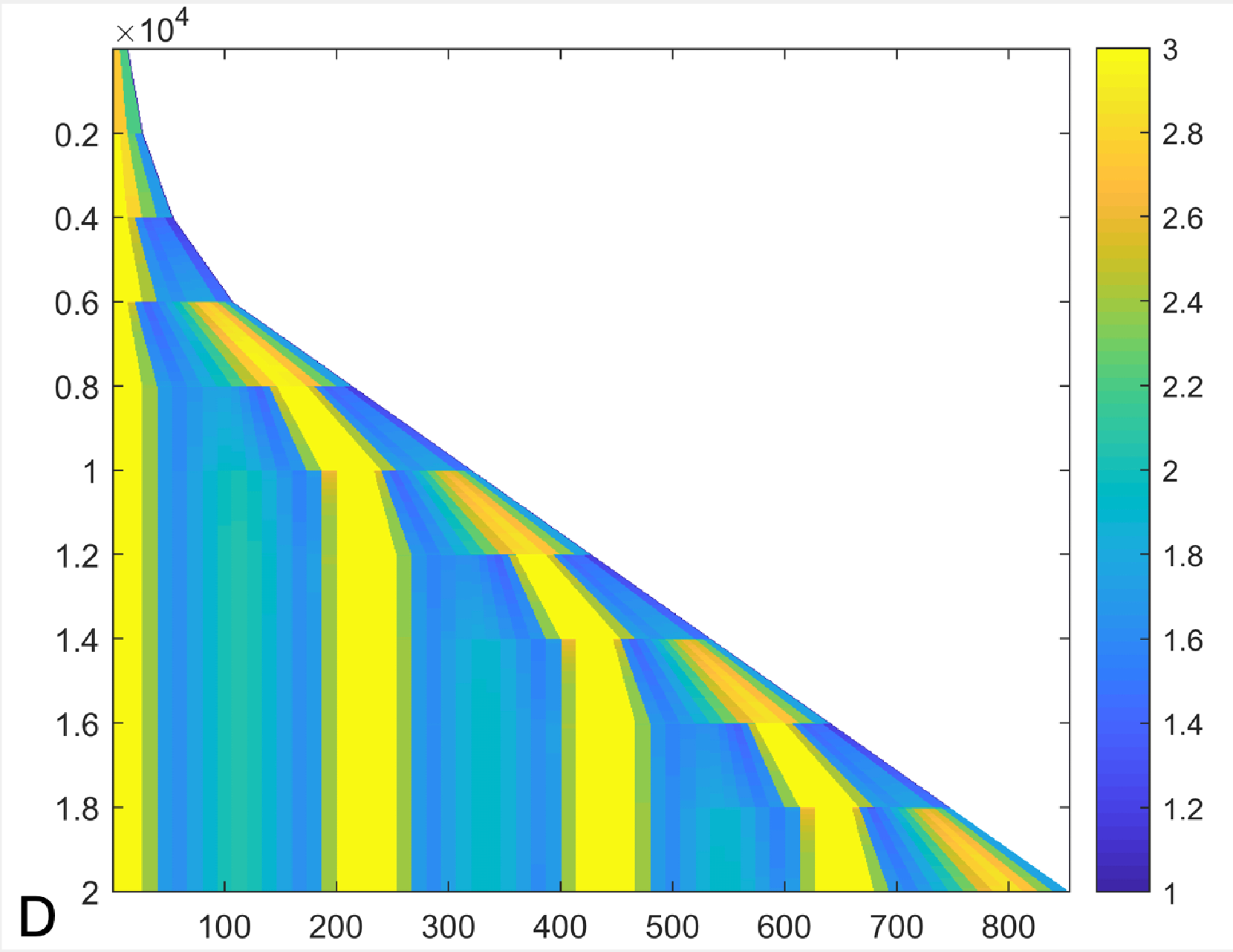Fluctuations in auxin levels depend upon synchronicity of cell divisions in a one-dimensional model of auxin transport
Authors
Bellows, S., Janes, G., Avitabile, D., King, J. R., Bishopp, A., Farcot, E.

Abstract
Auxin is a well-studied plant hormone, the spatial distribution of which remains incompletely understood. Here, we investigate the effects of cell growth and divisions on the dynamics of auxin patterning, using a combination of mathematical modelling and experimental observations. In contrast to most prior work, models are not designed or tuned with the aim to produce a specific auxin pattern. Instead, we use well-established techniques from dynamical systems theory to uncover and classify ranges of auxin patterns as exhaustively as possible, as parameters are varied. Previous work using these techniques has shown how a multitude of stable auxin patterns may coexist, each attainable from a specific ensemble of initial conditions. When a key parameter spans a range of values, these steady patterns form a geometric curve with successive folds, often nicknamed a snaking diagram. As we introduce growth and cell divisions into a one-dimensional model of auxin distribution, we observe new behaviour which can be conveniently explained in terms of this diagram. Cell growth changes the shape of the snaking diagram, corresponding to deformations of auxin patterns. As divisions occur this can lead to abrupt creation or annihilation of auxin peaks. We term this phenomenon 'snake-jumping'. Under rhythmic cell divisions, we show how this can lead to stable oscillations of auxin. However, we also show that this requires a high level of synchronisation between cell divisions. Using 18 hour time-lapse imaging of the auxin reporter DII:Venus in roots of Arabidopsis thaliana, we show auxin fluctuates greatly, both in terms of amplitude and periodicity, consistent with the snake-jumping events observed with non-synchronised cell divisions. Periodic signals downstream the auxin signalling pathway have previously been recorded in plant roots. The present work shows that auxin alone is unlikely to play the role of a pacemaker in this context.
Links
DOI PDFBibTeX
@article {Bellows2023Fluctuations,
doi = {10.1371/journal.pcbi.1011646},
author = {Bellows, Simon AND Janes, George AND Avitabile, Daniele AND King, John R. AND Bishopp, Anthony AND Farcot, Etienne},
journal = {PLOS Computational Biology},
publisher = {Public Library of Science},
title = {Fluctuations in auxin levels depend upon synchronicity of cell divisions in a one-dimensional model of auxin transport},
year = {2023},
month = {11},
volume = {19},
url = {https://doi.org/10.1371/journal.pcbi.1011646},
pages = {1-22},
number = {11},
}
c